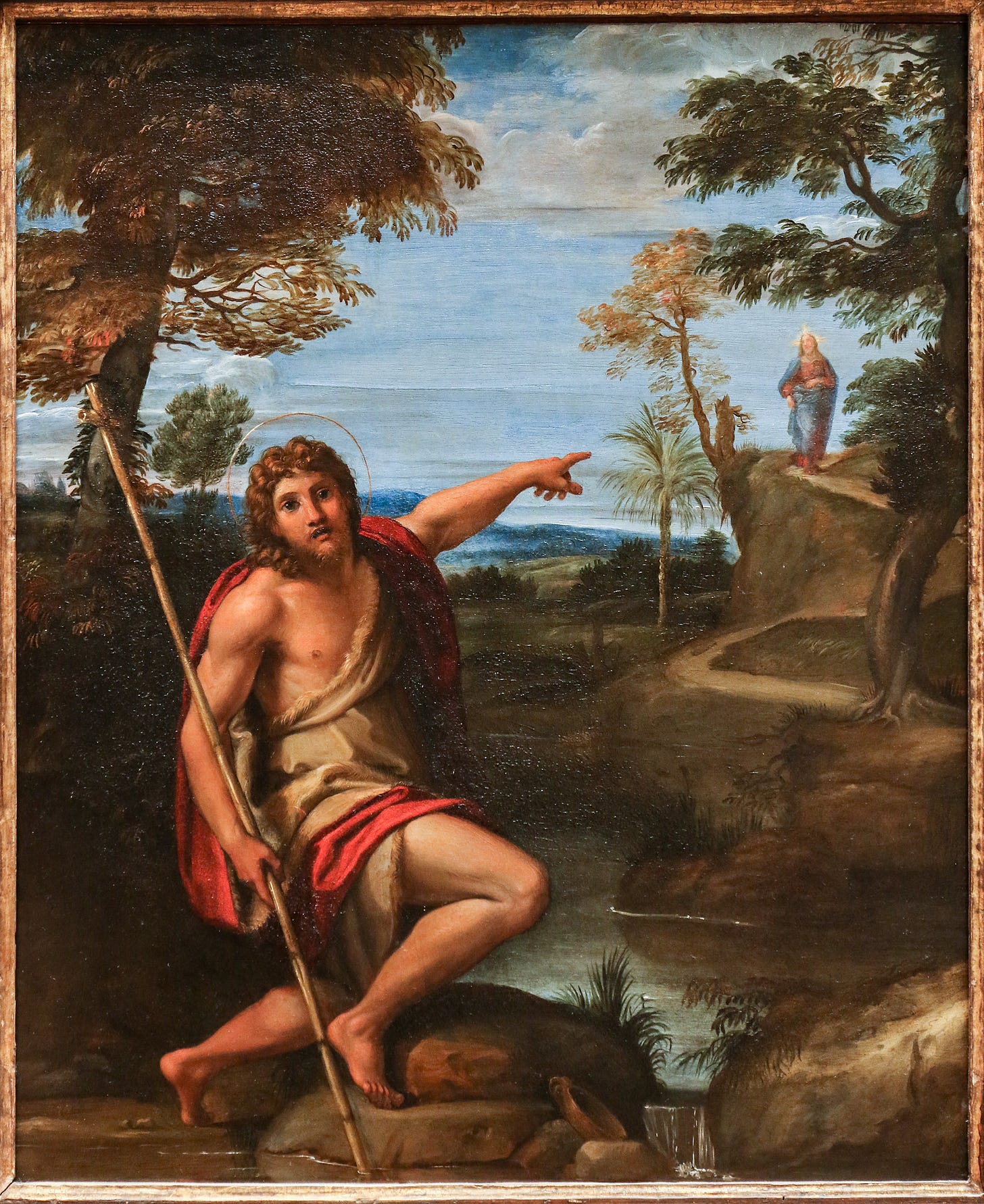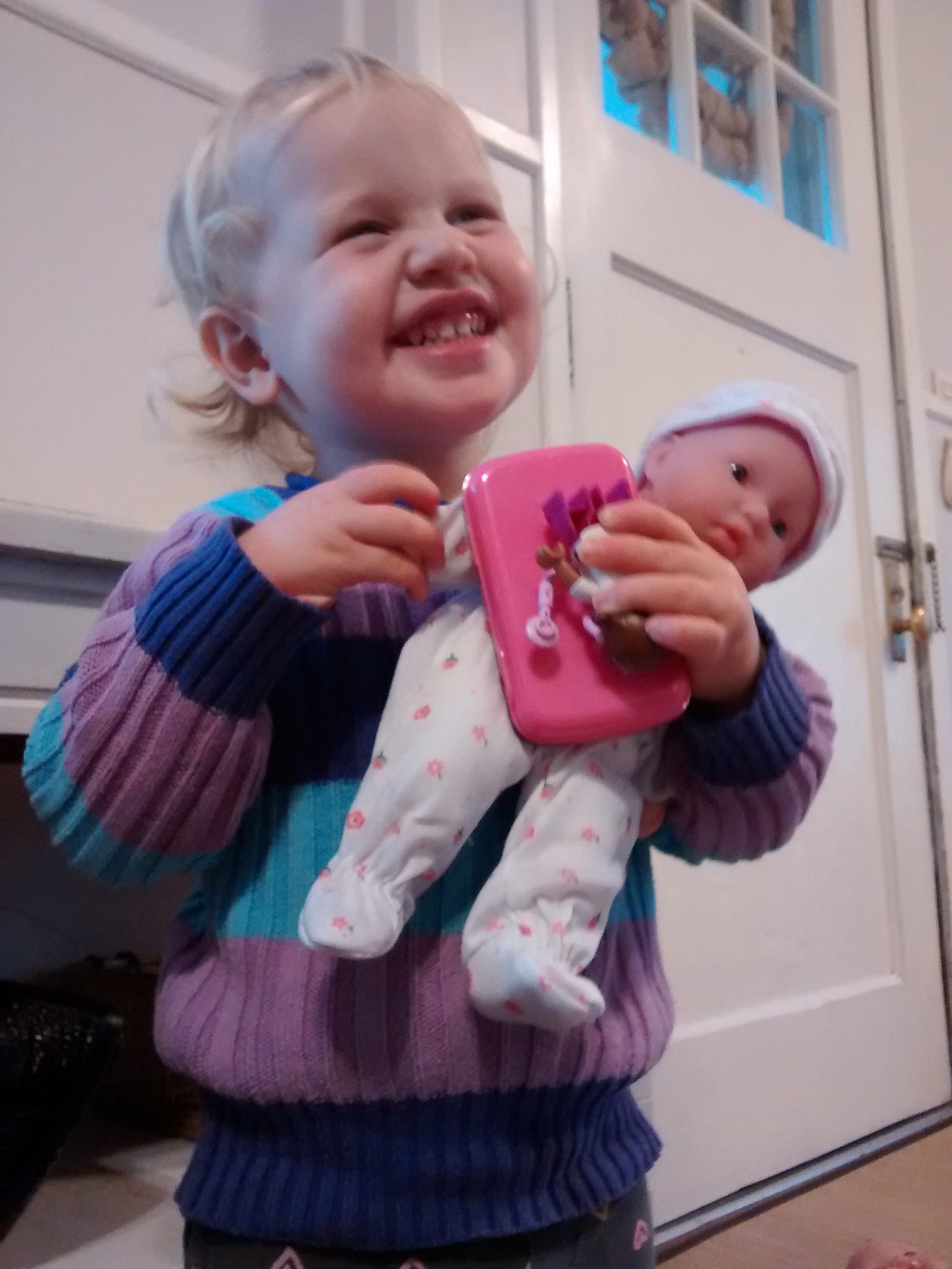Four O'Clock
A Meditation on John 1:35–39
“It was about four in the afternoon” (Jn 1:39).
This is my favorite line in all of Scripture. It is a line that tells the time. You ask: “Why? Why is it your favorite?” I was hoping you would inquire. Let’s look at the full passage:
The next day John [the Baptist] was there again with two of his disciples, and as he watched Jesus walk by, he said, “Behold, the Lamb of God.” The two disciples heard what he said and followed Jesus. Jesus turned and saw them following him and said to them, “What are you looking for?” They said to him, “Rabbi” (which translated means Teacher), “where are you staying?” He said to them, “Come, and you will see.” So they went and saw where he was staying, and they stayed with him that day. It was about four in the afternoon.” — Jn. 1:35-39
The day before, John the Baptist had identified Jesus as the Lamb of God (see Jn 1:29). Now, for the second day in a row, John the Baptist points him out again. This time, two of his own disciples are primed and ready. They follow after this Lamb of God. I like to imagine what this kind of stalking would have looked like. Clearly, they were trying to be discreet, but discretion only goes so far when God is involved. So, Jesus turns and he sees them. He sees them. I like to imagine this, too. Jesus turning and seeing me. What is that gaze like? What does he see when he looks upon me? What is like to make eye contact with Christ?
Next, we hear the first words out of the Word’s mouth in John’s Gospel in the form of a question: “What are you looking for?” These words, uttered nearly 2000 years ago, this question cuts across time and pierces our hearts today. It jumps off the page and demands an answer. Jesus’ inquiry reveals that God cares about our desires, that he takes them seriously. He wants to know what you want, what are you longing for, and what are you searching for?
Seemingly caught off guard, the wannabe disciples issue a clumsy response: “where are you staying?” At first blush, they don’t seem to answer his question. And, that might be the case. Still, I have often wondered if their question rests on an implied answer: “you.”
“What are you looking for?”
“You, Jesus. We’ve been looking for this long-promised Lamb of God and you are that Lamb and we don’t want to leave you. Where are you staying?”
The words of Scripture invite this kind of reflection. And they invite us to consider how we would respond, or if we would have taken off after Jesus in the first place. These two men did and they want to stay with Jesus.
Where is Jesus staying? Where does he dwell? “Come and you will see,” he says. This, too, is interesting. It reveals something about the life of faith. By coming to Jesus, by staying with Jesus, this is how we can see. If you want to see, if you want to see things rightly, come with me. We get the sense that seeing requires conversion. True sight comes through faith — that is, through encountering Christ and abiding in him. So, by coming with him, we can see.
“So they went and saw where he was staying, and they stayed with him that day.” But, where was Jesus staying? Here, our reflection entertains a certain duality. This comes out in two verses earlier in the chapter. On the one hand, Jesus, the Word of God taken flesh, “made his dwelling among us” (Jn 1:14). He made his abode right there in Nazareth. They went to a physical place, to a house, a home. Maybe his childhood home. Maybe Mary was there. On the other hand, Jesus dwells elsewhere. The NAB translates the line this way: “No one has ever seen God. The only Son, God, who is at the Father’s side, has revealed him” (Jn 1:18). Calling to mind the melancholy of Deuteronomy 34:10, John announces that Jesus is the one who has seen God face to face. In fact, his face is the face of God. His face reveals God. And this Son, God, dwells at the Father’s side. The RSV provides a tighter translation: “who is in the bosom of the Father.” The Son dwells in the kolpos, the chest, the bosom, the heart of the Father. Jesus is at home in the Father, resting in the heart of the Father and allowing that heartbeat to serve as the beat of his life. If this is true, then when Jesus invites the two disciples of John the Baptist to “come and see,” in some way, he shows them the heart of the Father. Jesus is both here and there, so to speak. He meets us here (i.e., in our concrete circumstances) so as to take us there (i.e., the Father’s heart), that by dwelling there, we might live here more fully (cf. Jn 10:10).
Now, if you fast forward in John’s Gospel to the thirteenth chapter, we learn that after Jesus washed the disciples’ feet the Beloved Disciple rests his head on the kolpos of Jesus. In so many ways, the Beloved Disciple represents every disciple throughout the Gospel. Those who follow Christ are God’s beloved disciples. And, here, the Beloved Disciple models the proper posture for a disciple — abiding in, resting in the heart of Jesus. Our lives should move according to the beat of Jesus’ heart.
If you use your imagination for a moment, I think we can drive all of this even deeper. If the Beloved Disciple (you!) rests his head on the heart of Jesus, and Jesus is rests his head on the heart of the Father, then where is the Beloved Disciple positioned? Between the hearts of the Father and the Son. Where are we at home? Where are we to abide? Between the hearts of the Father and the Son.
Let me illustrate the point by pulling one of my children into the mix. For quite a while, it seemed that whenever I gave my wife a hug, our daughter Cécile would come out of nowhere and wedge herself between us. She’d look up at us with her big eyes and say: “My home.” There was something wonderfully endearing about this childlike act. There was also something insightful. When applied to the image of abiding between the hearts of the Father and Son from John’s Gospel, we, too, can spiritually say: “my home.” Jesus made his home with us, that we might make our home in God — and abide in it.
Let’s get back to the original story. After the disciples go and stay with Jesus that day, we hear that it was about four in the afternoon. At the end of the Gospel, John tells us, “there are also many other things that Jesus did, but if these were to be described individually, I do not think the whole world would contain the books that would be written” (Jn 21:25). Yet, the Evangelist wastes a line to tell us the time: four o’clock. Why? Obviously, we can speculate all we want. All scholarly debate about authorship aside, my prayer has led me to consider that for John the Baptist’s unnamed disciple of the first chapter of John’s Gospel, the one who is the Beloved Disciple, the one who is the Evangelist himself, four o’clock was the moment of his encounter with Jesus. Four o’clock was the moment of transformation. It encapsulates an event that changed everything for him — opening the horizon of his life, while sending it in a new direction. “It was about four in the afternoon.”
The God who created the universe, the Word who was in the beginning with God and who, indeed, is God (cf. Jn 1:1–3), this God who creates time, this God has time for me. He makes time for me. Then, he enters time and meets me with stunning proximity. He encounters me here. Now. And you, too. And we can be at home in the Father, if only we would come to Jesus so as to see. Why not now? It’s about four in the afternoon.
Prayer of Abandon
Father,
I abandon myself into your hands;
do with me what you will.
Whatever you may do,
I thank you.
I am ready for all, I accept all.
Let only your will be done in me,
and in all your creatures.
I wish no more than this, O Lord.
Into your hands I commend my soul;
I offer it to you
with all the love of my heart,
for I love you, Lord,
and so need to give myself,
to surrender myself into your hands,
without reserve,
and with boundless confidence,
for you are my Father.
— Prayer inspired by St. Charles de Foucauld




